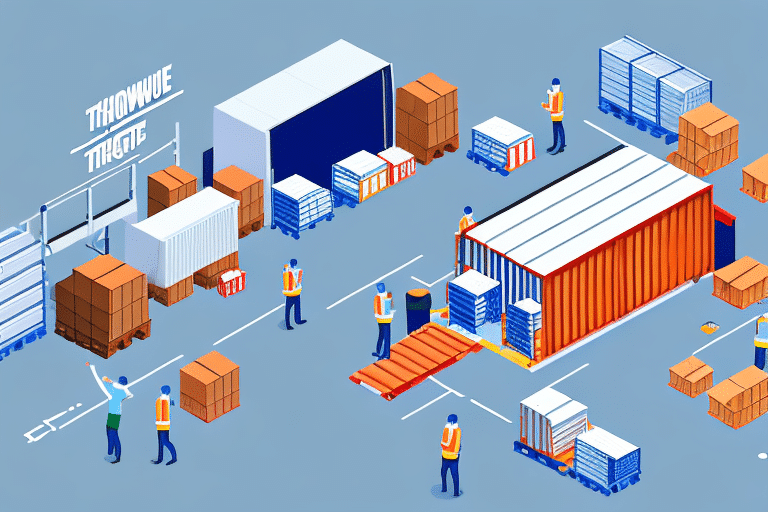Unlocking the Benefits of E-Fulfillment for Your Business
In today’s competitive marketplace, leveraging technology is essential for streamlining operations and enhancing the customer experience. One area where technology has a profound impact is the order fulfillment process. E-fulfillment, the use of electronic methods to manage and deliver orders, has surged in popularity among businesses of all sizes. This article delves into the benefits of e-fulfillment for your business and provides guidance on effective implementation.
Understanding E-Fulfillment: Definition and Evolution
What is E-Fulfillment and How Does it Work?
E-fulfillment encompasses the processes of receiving, managing, and delivering orders through electronic means. This includes online orders, orders received via email or other digital channels, and even orders placed through phone or fax that are subsequently entered into an electronic system. The core components of e-fulfillment involve order receipt, product picking and packing, and shipping to customers.
Central to e-fulfillment is a robust software platform that manages orders, inventory, and shipping logistics. This software typically integrates seamlessly with your online store or other sales channels, enabling automatic order processing. Once an order is placed, the system oversees the picking, packing, shipping, and tracking of packages, ensuring a streamlined fulfillment process.
The Evolution from Traditional to E-Fulfillment
Traditionally, businesses relied on manual methods like phone, fax, or mail to process orders, which were time-consuming and prone to errors. The advent of e-fulfillment has transformed order management by automating these processes, thereby saving time, reducing mistakes, and enhancing the customer experience.
With the rise of e-commerce, the demand for efficient and reliable fulfillment processes has increased. E-fulfillment allows businesses to be more agile, quickly adapting to changes in demand and expanding their product offerings with ease. Additionally, real-time order tracking provides businesses with valuable visibility into their fulfillment operations, enabling proactive issue resolution.
Benefits of E-Fulfillment for Businesses
Accuracy and Efficiency
Automated e-fulfillment systems significantly reduce errors in order processing, leading to higher accuracy rates. This enhancement not only boosts customer satisfaction but also fosters loyalty. According to a Statista report, companies that implement e-fulfillment systems can improve their order accuracy by up to 99%, compared to traditional methods.
Cost Savings
E-fulfillment can lead to substantial cost reductions by minimizing labor expenses, lowering shipping and handling costs, and decreasing inventory carrying costs. Automation reduces the need for manual intervention, allowing businesses to allocate resources more effectively. A study by Forbes highlights that businesses can save up to 30% in operational costs through effective e-fulfillment strategies.
Flexibility and Scalability
E-fulfillment systems offer businesses the flexibility to scale operations according to demand fluctuations. Automated inventory management and order processing enable quick adjustments to inventory levels and product offerings, ensuring that businesses can meet market trends and customer needs effectively.
Enhanced Customer Satisfaction and Loyalty
By delivering products faster and more accurately, e-fulfillment enhances the overall customer experience. Automated tracking and shipping notifications keep customers informed about their order status, reducing anxiety and increasing satisfaction. Satisfied customers are more likely to leave positive reviews and recommend the business to others, driving repeat business and loyalty.
Implementing E-Fulfillment: Strategies and Best Practices
Choosing the Right E-Fulfillment Provider
Selecting a reliable e-fulfillment provider is crucial for the success of your e-fulfillment strategy. Consider factors such as:
- Experience: Opt for providers with a proven track record, preferably with experience in your industry.
- Technology: Ensure the provider utilizes advanced technology and automation tools for order and inventory management.
- Scalability: Choose a provider capable of scaling with your business growth.
- Customer Service: Excellent customer support is essential for resolving issues promptly.
Overcoming Common Challenges
Implementing e-fulfillment may present challenges such as integrating new systems with existing technologies and ensuring seamless data migration. To overcome these obstacles:
- Collaborate Closely: Work closely with your e-fulfillment provider to ensure smooth integration and address any technical issues promptly.
- Provide Training: Train your staff to adeptly use the new e-fulfillment systems.
- Plan for Data Migration: Carefully plan and execute data migration to prevent loss or inconsistencies in order and inventory data.
Optimizing Your E-Fulfillment Process
Maximize efficiency by automating and streamlining fulfillment processes wherever possible. Utilize data analytics and forecasting to manage inventory effectively, ensuring that you maintain optimal stock levels and meet customer demand without overstocking.
Technology and Future Trends in E-Fulfillment
The Role of Automation and Innovation
Advanced technology and automation are the backbone of modern e-fulfillment systems. Automated inventory management ensures real-time tracking of stock levels, while automated order processing and shipping enhance speed and accuracy. Innovations such as artificial intelligence (AI) and machine learning are further refining these processes, enabling predictive analytics and smarter decision-making.
According to a McKinsey report, AI-driven automation can increase fulfillment efficiency by up to 50%, significantly reducing operational costs.
Future Trends in E-Fulfillment
- Artificial Intelligence: AI is set to play a larger role in inventory management, demand forecasting, and personalized customer experiences.
- Robotics: The use of robotics in picking and packing is increasing, enhancing speed and reducing labor costs.
- Omnichannel Integration: Seamless integration with multiple sales channels will become standard, providing a unified fulfillment experience.
- Sustainability: There is a growing emphasis on sustainable fulfillment practices, including reduced packaging waste and lower carbon emissions.
Security and Hybrid Fulfillment Strategies
Addressing Security Concerns
Security is paramount in e-fulfillment to protect both customer data and business operations. Implementing robust security measures such as two-factor authentication, data encryption, and secure access controls is essential. Additionally, partnering with e-fulfillment providers that adhere to stringent security protocols helps mitigate risks associated with data breaches and fraud.
The IBM Security Report indicates that businesses implementing comprehensive security measures can reduce the risk of data breaches by up to 80%.
Combining Traditional and E-Fulfillment for a Hybrid Strategy
While e-fulfillment offers numerous advantages, some businesses may benefit from a hybrid strategy that combines traditional and electronic fulfillment methods. This approach allows businesses to leverage the strengths of both systems, providing greater flexibility and control over the fulfillment process.
For instance, specialized or high-value products can be managed through traditional methods to ensure extra care, while standard products can be fulfilled electronically for efficiency.
Measuring Success: Metrics and Case Studies
Key Metrics for Evaluating E-Fulfillment
To assess the effectiveness of your e-fulfillment strategy, monitor the following key metrics:
- Accuracy Rate: The percentage of orders fulfilled without errors.
- Lead Time: The time taken to process and ship an order from receipt to delivery.
- Inventory Turnover: How quickly inventory is sold and replaced over a period.
- Customer Satisfaction: Measured through feedback, reviews, and repeat business.
Utilizing these metrics helps identify areas for improvement and ensures that your fulfillment processes align with business goals.
Real-Life Examples of Successful E-Fulfillment Strategies
- Amazon: Amazon's sophisticated e-fulfillment network enables rapid order processing and delivery, serving millions of customers worldwide with high accuracy and efficiency.
- Zappos: Known for its exceptional customer service, Zappos utilizes an effective e-fulfillment system that prioritizes order accuracy and swift delivery, fostering strong customer loyalty.
- Wayfair: Wayfair's advanced e-fulfillment infrastructure integrates multiple sales channels, ensuring fast and accurate order fulfillment for a vast range of home goods.
Conclusion
E-fulfillment presents a plethora of benefits for businesses, including enhanced efficiency, significant cost savings, and improved customer satisfaction. By harnessing advanced technology and automation, businesses can streamline their fulfillment processes, delivering products faster and more accurately than traditional methods allow. Selecting the right e-fulfillment provider and continuously optimizing your strategy are key to unlocking the full potential of e-fulfillment, ensuring your business remains competitive in a fast-paced marketplace.






















